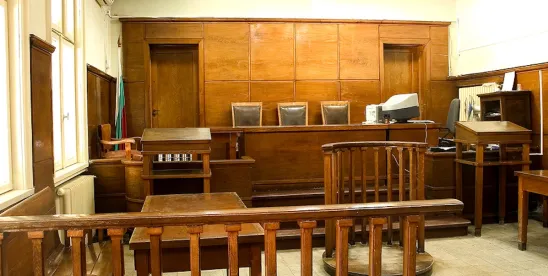Navigating complex technology in trials can be challenging, requiring a clear understanding of technical concepts and effective communication to ensure the fact finder comprehends important details. In this video, Partner Erik Milch explores strategies and tools to simplify and present sophisticated technology effectively in the courtroom.
Transcript
Erik Milch: Complex technology in trials touches every one of our clients, every one of our practice areas, and when you get into cases like intellectual property cases that I handle, technology plays a key role.
In any technology case, graphics are incredibly important and I can’t emphasize that enough. If a picture is worth 1000 words, an animation is worth a million. When I start a case, I think about the graphics from day one. I don’t go out and hire graphics vendor day one; it’s pretty expensive. But I think about what I’m ultimately going to have to tell the jury and how am I going to show that through graphics. I make sure that the evidence that I have supports every graphic that we’re going to put in front of the jury, because it’s absolutely essential that you’re accurate.
One of the most valuable techniques that I’ve employed in my cases is presenting my opening statement to my entire team before trial, and that includes not just the attorneys on the team; the paralegals, the trial support team, the trial graphics team, and I present the case to them. For a lot of them, it’s the first time they’ve ever heard it, and that’s like a jury. So, the feedback that I get from that where they’re saying, “You’ve made it so complicated, I have no idea what you’re saying,” I know I’ve got to go back to the drawing board. So, that I’ve found to be incredibly effective, and I’ve used that in all of my trials.
In complex technology trials, there are a few things that really matter. One of them is distilling the facts down to its simplest form that the jury can understand. Don’t oversimplify it, but make sure they get it. And you do that by connecting with the jury or the judge or the arbitrator, making sure that they’re on the same page. You’ve seen that light bulb go on, and they get it. And then ultimately, you make sure you do all this by using graphics that follow your theme, graphics that help you explain the technology supported by detailed evidence that you’ve gathered throughout the case to give your story to the jury. I found that in closing, you can refocus the jury on what matters.
I like to figure out, what is the key component of the technology? What lines up with our theme, and what’s the key technical aspect that’s going to get us to the right result?
We had a case where we relied on an animation that the other side had put out publicly in their literature, and we used that in our case. What they did was created a whole new set of graphics and animations from whole cloth that didn’t quite represent how things worked, and they lost credibility. And we’re able to leverage that in front of the jury and say, these are their documents. You don’t have to believe us. This is what their animations show. And it was incredibly effective.
At the end of the case, when I get up to do my closing, I keep it really short. I refocus the jury on what matters, focus them on the simplicity of the technology. Show them that you trust them, that they understand the technology. I give them the case, and I get the result that I want.



 />i
/>i
